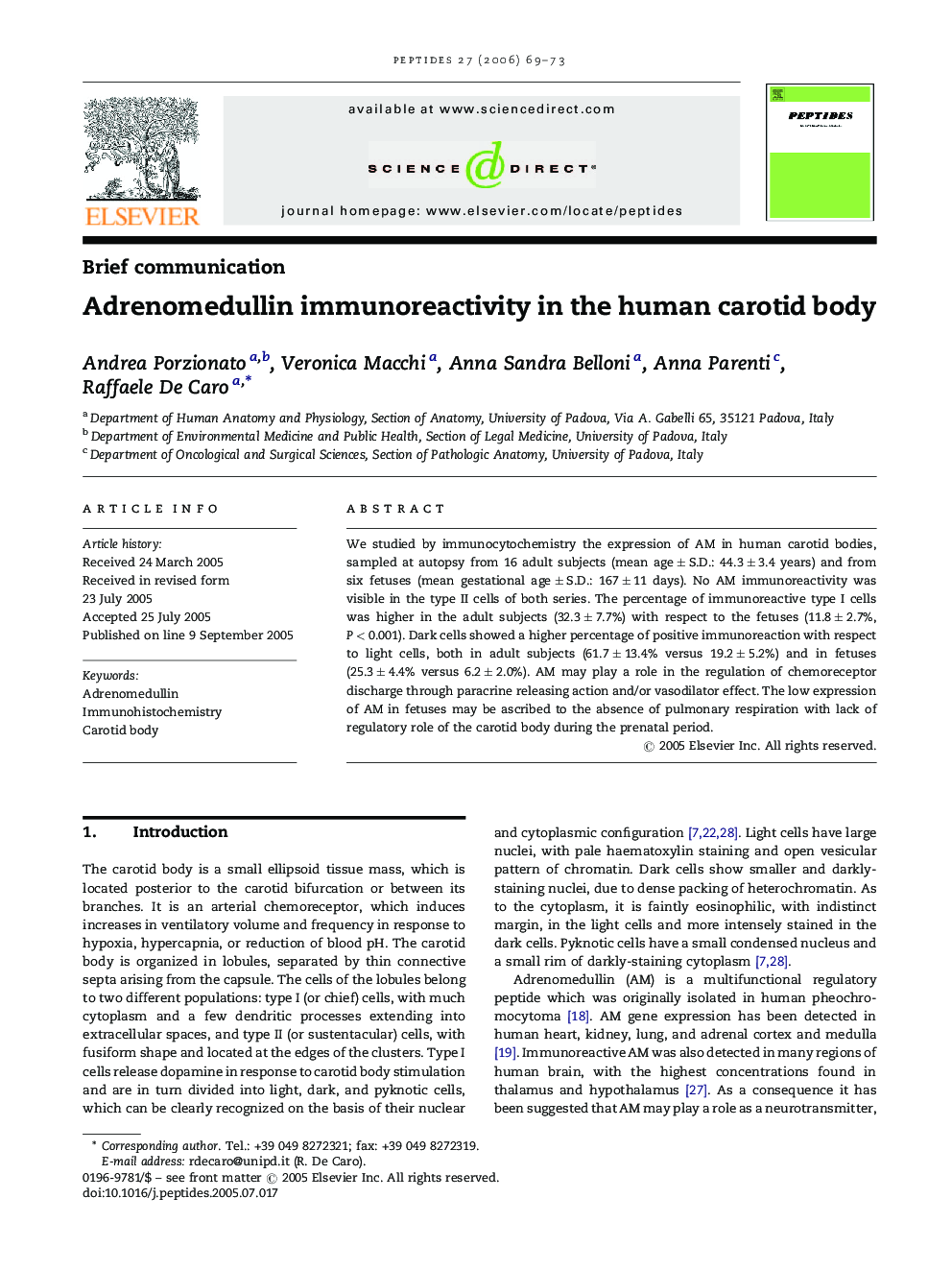| Article ID | Journal | Published Year | Pages | File Type |
|---|---|---|---|---|
| 2008046 | Peptides | 2006 | 5 Pages |
Abstract
We studied by immunocytochemistry the expression of AM in human carotid bodies, sampled at autopsy from 16 adult subjects (mean age ± S.D.: 44.3 ± 3.4 years) and from six fetuses (mean gestational age ± S.D.: 167 ± 11 days). No AM immunoreactivity was visible in the type II cells of both series. The percentage of immunoreactive type I cells was higher in the adult subjects (32.3 ± 7.7%) with respect to the fetuses (11.8 ± 2.7%, P < 0.001). Dark cells showed a higher percentage of positive immunoreaction with respect to light cells, both in adult subjects (61.7 ± 13.4% versus 19.2 ± 5.2%) and in fetuses (25.3 ± 4.4% versus 6.2 ± 2.0%). AM may play a role in the regulation of chemoreceptor discharge through paracrine releasing action and/or vasodilator effect. The low expression of AM in fetuses may be ascribed to the absence of pulmonary respiration with lack of regulatory role of the carotid body during the prenatal period.
Related Topics
Life Sciences
Biochemistry, Genetics and Molecular Biology
Biochemistry
Authors
Andrea Porzionato, Veronica Macchi, Anna Sandra Belloni, Anna Parenti, Raffaele De Caro,
